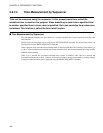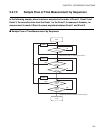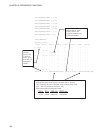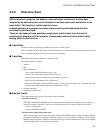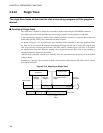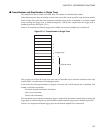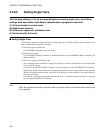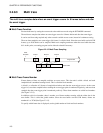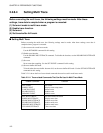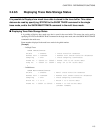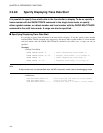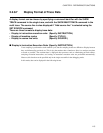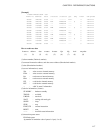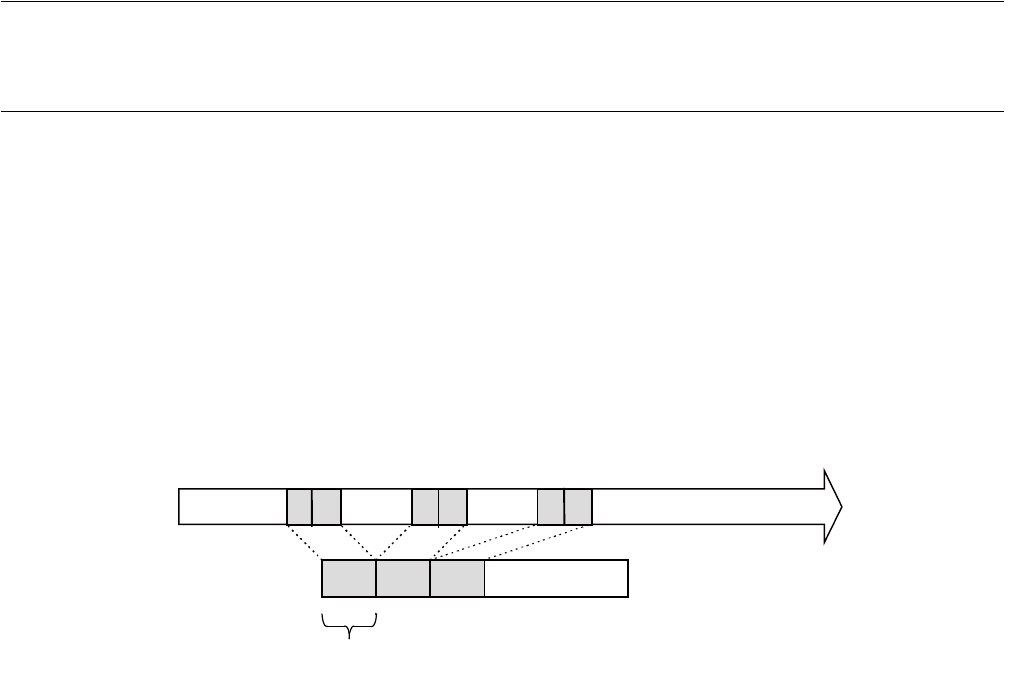
110
CHAPTER 2 DEPENDENCE FUNCTIONS
2.2.8.3 Multi trace
The multi trace samples data where an event trigger occurs for 8 frames before and after
the event trigger.
■ Multi Trace Function
Execute multi trace by setting the event mode to the multi trace mode using the SET MODE command.
The multi trace samples data where an event trigger occurs for 8 frames before and after the event trigger.
It can be used for tracing required only when a certain variable access occurs, instead of continuous tracing.
The trace data sampled at one event trigger (16 frames) is called a block. Since the trace buffer can hold 32K
frames, up to 2048 blocks can be sampled. Multi trace sampling terminates when the trace buffer becomes
full. At this point, a executing program can be allowed to break if necessary.
Figure 2.2-12 Multi Trace Sampling
■ Multi Trace Frame Number
Sixteen frames of data are sampled each time an event occurs. This data unit is called a block, and each
sampled block is numbered starting from 0. This is called the block number.
A block is a collection of 8 frames of sampled data before and after the event trigger occurs. At the event
trigger is 0, trace data sampled before reaching the event trigger point is numbered negatively, and trace data
sampled after the event trigger point is numbered positively. These frame numbers are called local numbers
(See Figure 2.2-13).
In addition to this local number, there is another set of frame numbers starting with the oldest data in the
trace buffer. This is called the global number. Since the trace buffer can hold 32K frames, frames are
numbered 1 to 32768 (See Figure 2.2-13).
To specify which frame data is displayed, use the global number or block and local numbers.
Start
execution
↓
Program flow
Trace buffer
Block
Event 1
↓
Event 2
↓
Event 3
↓



